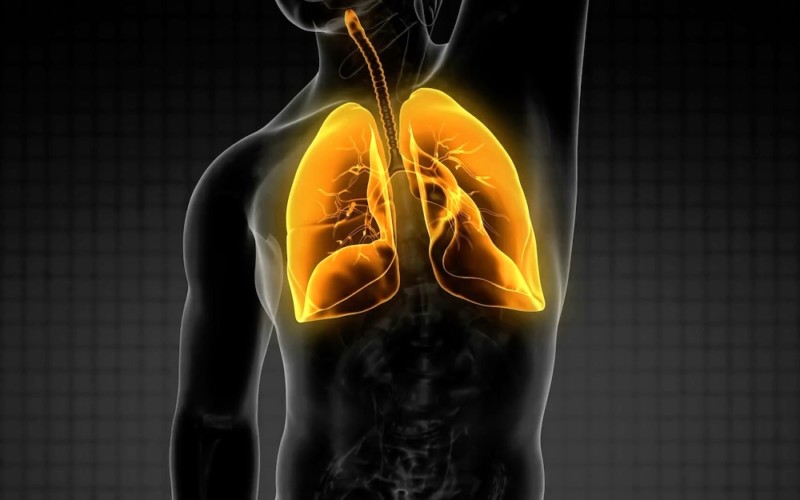For most of us, breathing is as easy as…well, breathing. For a normal respiratory system, breathing is automatic and behind the scenes. We seldom think of it. When the body builds up too much CO2, it releases it by exhaling and replaces it with oxygen-rich air. Easy as pie.
Until it isn’t. The respiratory system relies on healthy lungs to function properly, but there are dozens of very lung problems that can keep them from doing so. From asthma to COPD; here are some of the most common lung problems that can keep you from breathing easily.
Table of Contents
Common Lung Problems:
1. Asthma
Asthma is a common lung problem that affects the airways, causing swelling and spasm. The problem with asthma isn’t just the inability to breathe in clean air, it’s the inability to rid the lungs of “used” air.
In America, The Center for Disease Control estimates that a staggering 26 million Americans have asthma. That’s one person out of every thirteen people. 8.3 percent of all adults and the same percentages of children have this devastating disease.
It results in thousands of deaths and millions of hospitalizations every day. It is, by far, the most common lung problem in the US and other countries, and the numbers continue to rise.
The prognosis for those with asthma is generally very good. Medications, such as inhalers, can help people suffering from asthma to live normal lives.
2. Chronic Obstructive Pulmonary Disease (COPD)
COPD isn’t necessarily one disease, it is a term that covers several different diseases that share the same symptomology. Emphysema and chronic bronchitis are two diseases that are considered to be COPD. COPD is a preventable condition that usually affects smokers. It causes many symptoms like breathlessness and a productive cough.
This common lung problem starts in early adulthood but is usually not diagnosed until much later in life, when the patient is fifty to sixty years old.
Once diagnosed with COPD, it becomes an issue of management for the patients. Patients will have inhalers and be on bronchodilator medications, and some may need to be on supplemental oxygen. Sadly, COPD is the third leading cause of death in the US.
3. Lung Cancer
Lung cancer is the most common cause of death related to cancers. It is caused by cigarette smoking, but non-smokers can get it from pollutants, hazardous fumes, asbestos, and work-related conditions. The growth of cancerous tumors interferes with the lungs’ abilities to function.
Generally, lung cancer isn’t discovered until the disease has progressed to the level of displaying symptoms. Early warning signs can be a cough, changes in the voice, or difficulty breathing.
There are treatments for this common lung problem that, if caught early enough, can let the patient recover in a cancer-free period called “remission.” The treatments can be as harsh as the disease, with many side effects causing nausea, hair loss, and weight loss.
4. Cystic Fibrosis
Cystic Fibrosis is caused by a genetic defect. The disease affects nearly 30 thousand people in the US, per the Cystic Fibrosis Foundation, with the largest percentage of those diagnosed in early childhood. Cystic Fibrosis will cause the lungs to form a thick, sticky substance that clings to the airways and lungs, affecting their function.
The disease process itself is devastating, but it also brings along other health issues like frequent infection, poor growth rates in affected children, and frequent coughing spells.
Ultimately, Cystic Fibrosis will lead to bronchiectasis, a condition that results in widely dilated airways. This allows the fluid to pool in them, leading to increased respiratory problems. For some reason, bronchiectasis is more common among women.
5. Pneumonia
Pneumonia is a very common lung problem that comes from an infection in the lungs themselves. These infections are classified as fungal, bacterial, and viral. Pneumonia can be devastating for those who are older or very young. A healthy adult will kick the illness within a few weeks.
The CDC recommends that those at risk should receive a pneumonia vaccination and that everyone practices common sense germ control.
Babies and those confined to bed are at risk for another form of this illness called aspirating pneumonia. It occurs when fluids are inhaled into the lungs, usually as a result of feeding. The fluid in the lungs will inhibit their ability to function properly. This is always a true medical emergency that will require prompt medical attention.
Ways to combat Common Lung Problems
While you can’t reverse most of the common lung problems after they begin, it is possible to lessen their effects.
1. Breathe clean air
Change your air filters in your heating and cooling systems frequently. If you are working in an environment full of dust or smog, wear a mask to avoid breathing particulates directly into your lungs.
2. Know your environment
Don’t hesitate to read the Material Safety Data Sheets at your job. They are there, freely available, for you to know the risks in your workplace.
3. Keep your prescriptions available
If you are going away, even for a night, make sure you pack your inhalers. You may consider keeping one at work, at your home, and even in your car as long as they aren’t subject to temperature extremes.
4. Tell people about your lung problem
If something happens, you need for those around you to understand that you have a common lung problem. They can help you retrieve your medications or tell medical personnel about your medical history in case of an emergency.
5. Stop smoking
Your lungs will begin the healing process within a day of your last cigarette. It is estimated that within two days, damaged nerve endings will regrow, and within four days your body will be completely nicotine free. Your lungs will continue to heal, dropping your risks of developing some common lung problems to levels of nonsmokers.
6. Annual physicals
Visits to your private physician are important for your lung health. He can spot potential problems, risk factors, and other concerns during your visit and schedule testing to evaluate your lungs for any signs of common lung problems.





